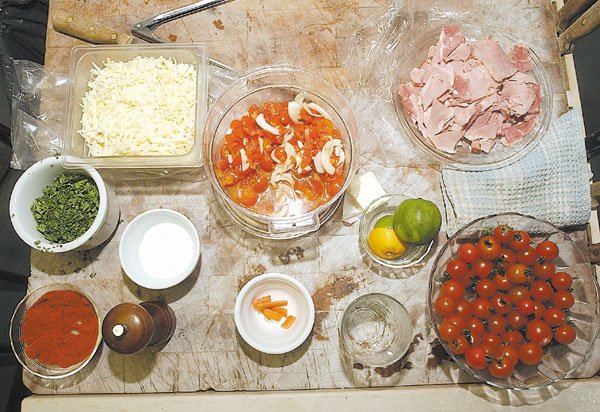For some local chefs, warmer weather means a chance to get
fresh. With spring entering its peak and new crops coming into
season, several restaurants are changing their menus to create
fresher-tasting and more colorful dishes.
For some local chefs, warmer weather means a chance to get fresh. With spring entering its peak and new crops coming into season, several restaurants are changing their menus to create fresher-tasting and more colorful dishes.
The wider selection of spring and summer crops allows chefs to be more inventive in the kitchen and to add flair to the presentation of their meals, said Tony Ybarra, general manager of the Cedar House in Hollister.
During the fall and winter, chefs use vegetables such as butternut squash, onions and potatoes to create hearty, stick-to-your-ribs meals including stews and meat dishes. In the spring and summer, they have a larger selection of vegetables to choose from – including bell peppers, zucchini, summer squash and asparagus – to prepare lighter and more eye-pleasing plates.
“In the winter, the heartier soups are good because they help take the chill out of the air,” Ybarra said. “But in the spring, we have more to work with, things that have more color to them. During the winter, we’re lucky to get carrots and broccoli in the way of color.”
Colorful is a good way to describe the mango-strawberry sauce head chef Socrades Diego drizzles over his pepper-crusted salmon, a popular dish at Morgan Hill’s Golden Oak Restaurant.
Diego said he buys the bulk of his produce at Mi Casa Mexican Deli, a fruit stand and deli on Tennant Avenue that the chef praised for its varied, high-quality selection of fresh fruits and vegetables.
“As far as what’s in season now, the apples are pretty good, and they can be used in apple tarts and sauces – especially on pork. Pork is delicious with apples,” he said. “The strawberry crop has been up and down, but I use strawberries a lot for desserts, sauces and for decorations on the plate.”
Strawberries have taken a hit this year due to the fickle patterns of rain and cool air that have characterized this spring, said Kip Brundage, owner of Gilroy’s G&K Farms. The combination of rain and sun forms mold on the berries, and the perpetually wet earth is a breeding ground for the fungus, he said.
“Strawberries are just getting murdered this year. These showers coming through are really devastating to strawberry guys,” he said.
Growers invest $10,000 per acre of strawberries to get the fruit in its fullest form, Brundage said, but they only have through August to pick the crop, so losing even just a couple of pickings can be a pretty major hit.
The erratic weather hasn’t had as much of an effect on other current crops such as lettuce and cauliflower, Brundage said.
But Diego said tomatoes – which he uses often for sauces in pasta dishes, atop salads and pureed in soups – also have been damaged. The chef said he could buy a 50-pound case of roma tomatoes for about $14 two years ago. Last year the price went up to $35 a case and this year to $45, Diego said. As a result, customers requesting extra tomatoes on the side sometimes are charged an additional 50 cents.
“They’re just expensive right now,” Diego said. “We try to buy our tomatoes locally, from Hollister and Salinas, but right now we’re getting them from Mexico and Florida.”
The next bout of fruits due in June includes apricots, blackberries, corn and raspberries, according to the Santa Clara County Farm Bureau.
The upcoming harvest is something Ybarra is looking forward to, as it will provide his bakery a fresh array of ideas for homemade fruit pies, tarts and pastries.
“The restaurants in our area are very lucky in the sense that we have fresh produce grown pretty much right in our backyard,” Ybarra said. “It’s available to us year-round, and we don’t have to get everything shipped in from far away.”













